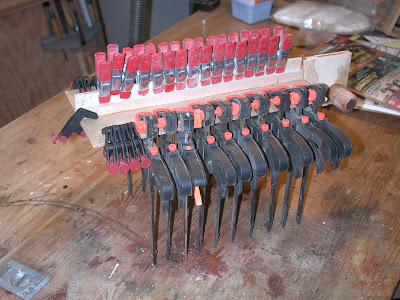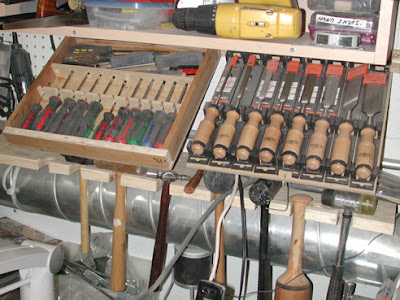I sometimes get requests for things I have made one of and find that making a second one is as time consuming as the first and prone to the same errors.
To avoid this I try to make jigs that take the guessing out and speed up the process when the need arises.
I will be using this business card holder as a prize in several silent auctions this year so I wanted to keep the fabrication time down to a minimun.
The first shot shows several prototypes where I worked out the shape and size I wanted to use.
This is absolutely an essential step .
This next picture shows the jig made from MDF .It is essentially a right angle to butt the blank on with two adjustable cleats to hold the blank firmly in the corner.
On top of that is a guide to center the forstner bit exactly for cutting each corner.
I used 3/4" MDF and 11/16" spruce for the right angle to allow the blanks to side in and out without binding.
Next picture show how the guide centers the forstner bit so it drops on the same spot each time.
Here I am showing the finished blank still resting in the jig, We now have 4 nearly identicle corner radiuses.
This took about 2 minutes to prep thanks to the jig.
Next picture shows the set up for the mini router bit profile.
With a prototype blank mounted in the jig I ran a test to make sure we have the profile set correctly on the edges.
This shot shows a couple of blanks ready for finishing.
I tried 2 different profiles on them to see what works for me.
Here are some early results from the jigging.
I have yet to make a small jig for dirilling the screw holes that mount the stantions. - Later
Special thanks to "Dusty56 ":http://lumberjocks.com/projects/16691 who inspired me and helped me get up and running on this project




























